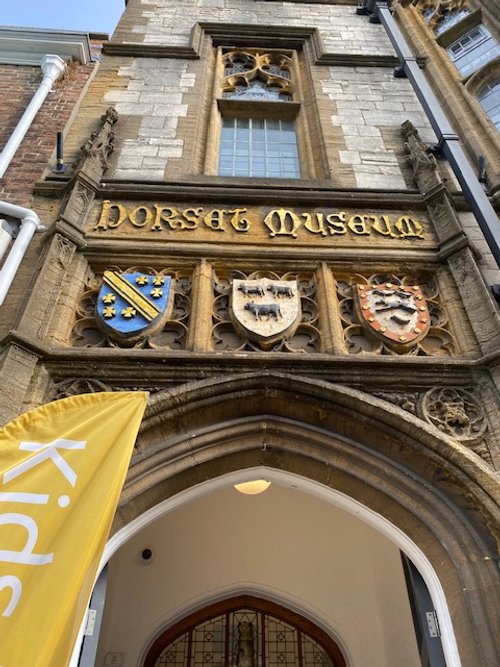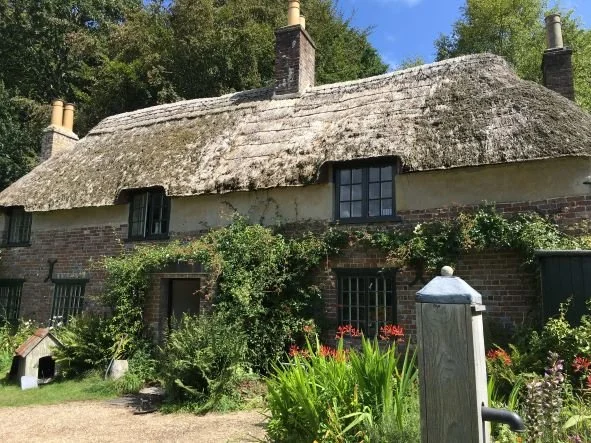Dorchester: Thomas Hardy
Dorchester is the county town of Dorset and is the setting for ‘The Mayor of Casterbridge’.
Born 1840 in a small village called Stinsford, a short distance from Dorchester, Hardy was educated here and spent much of his later life in the town. His love of the area is reflected in his writing as he creates a fictional version of the town (Casterbridge) and surrounding areas, known as Hardy’s Wessex. Many places in the town are referred to in the book, making it a fascinating place for any Hardy lover to visit!
By the Top O’ Town Roundabout a bronze statue of Thomas Hardy welcomes visitors to the town and I tend to park in the car park at this end of the town when I visit. Unveiled by J M Barrie, a friend of Hardy’s, the statue was created by Eric Henri Kennington in 1931 and shows Hardy sitting on a tree stump, his hat on his knee, gazing benignly at passers-by. Apparently, this location stands upon the old Roman walls and would have appealed to Hardy; however, it feels as if he is slightly lost here, next to a busy roundabout with cars rushing past
Henchard's House in ‘The Mayor of Casterbridge’ is described as ‘one of the best, faced with dull red and grey old brick.’ Barclays Bank in South Street is the reputed location of the house and a blue plaque on the building indicating this draws attention to this fact. Other buildings like the Corn Exchange, The King’s Arms and St Peter’s Church are also mentioned in ‘The Mayor of Casterbridge’ and other Hardy novels.
Maumbury Rings is an easy walk from the town centre. It was the scene of Henchard's secret meetings with his long-lost wife in ‘The Mayor of Casterbridge’, but is a fascinating place in its own right.
‘The ring at Casterbridge was merely the local name of one of the finest Roman Amphitheatres, if not the finest, remaining in Britain… (It) was a huge circular enclosure with a notch at opposite extremities of its diameter north and south.’ (The Mayor of Casterbridge)
The ring was used as a place of execution and in 1706, a nineteen-year-old called Mary Channing was executed here, watched by a huge crowd. She was strangled and burned at the stake, having allegedly poisoned her husband, Thomas Channing, with mercury, some thirteen weeks after the marriage which she had been cajoled into by her parents. Although the jury took only half an hour to find her guilty, she protested her innocence to the last. Having ‘pled her belly’, her execution was postponed until after she had given birth in gaol. Although Mary was supposed to be strangled to death before the fires were lit as an act of clemency, evidence suggests that she was still alive when in the flames. Hardy always doubted her guilt and she is mentioned in ‘ The Mayor of Casterbridge’ and is also the inspiration for his poem, ‘ The Mock Wife’. Boards around the site offer plenty of information about this and other aspects of the site’s history.
The Dorset Museum’s Writers' Gallery includes the world's finest collection of Hardy memorabilia, including a reconstruction of his study at Max Gate. There is so much to see here that it is well worth the entry fee for this alone.















